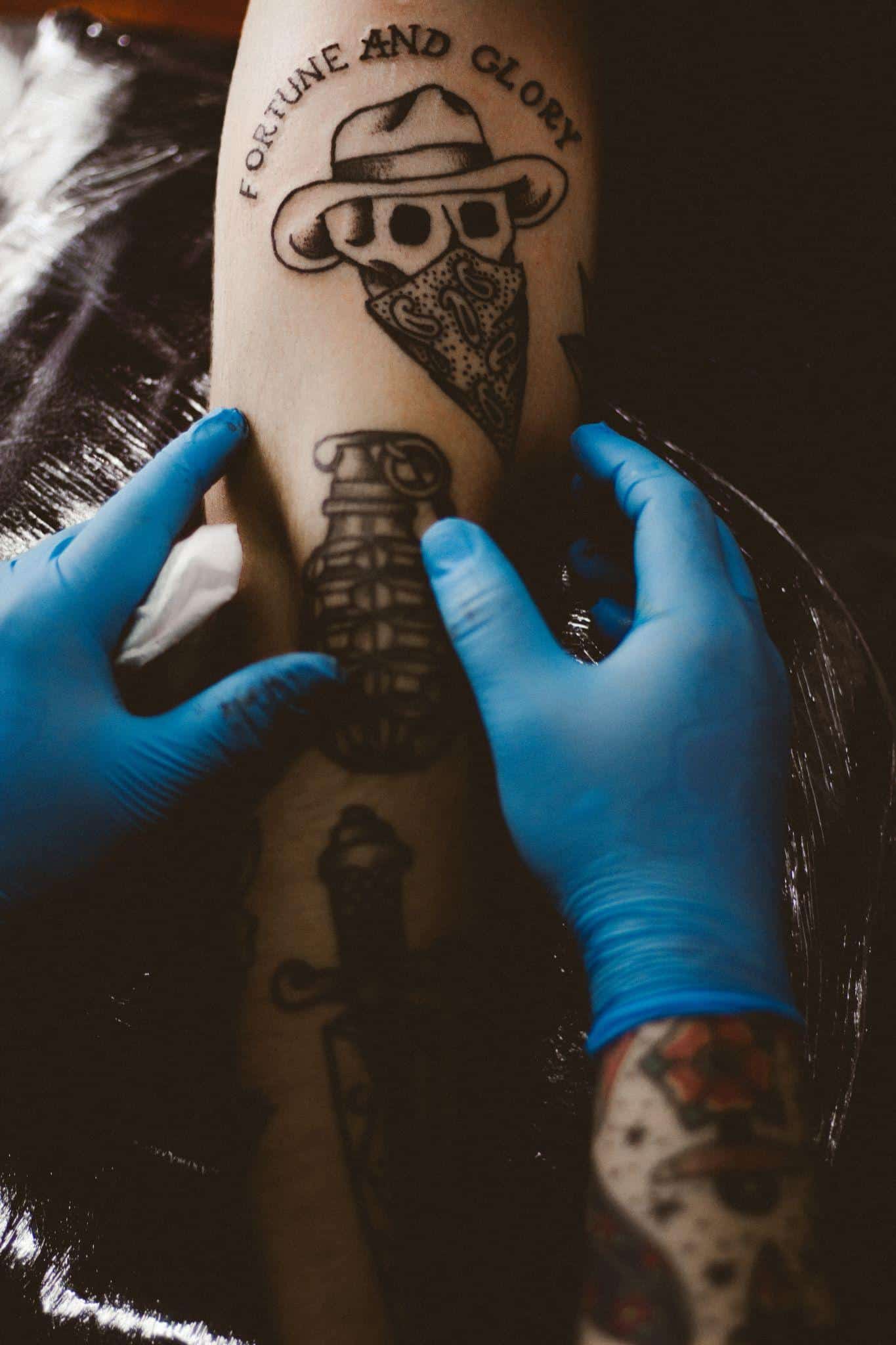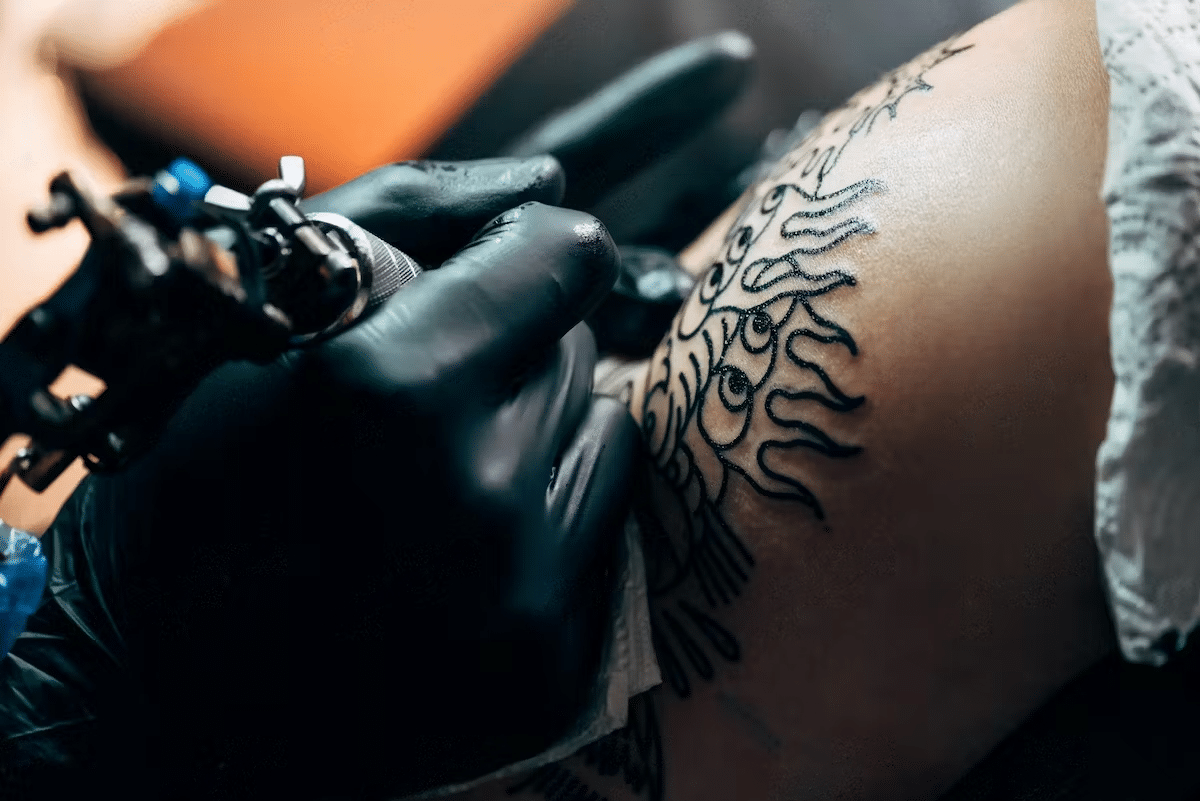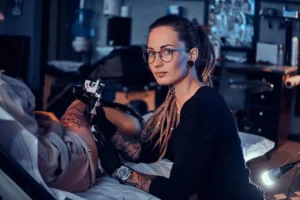
Are you experiencing a raised tattoo that’s causing you discomfort or self-consciousness? Whether you’re a tattoo newbie or have multiple tattoos, a raised tattoo can be frustrating.
Luckily, there are various ways to fix it.
In this comprehensive guide, we’ll take you through the ABCs of fixing a raised tattoo, explain the common causes of raised tattoos and how to prevent them in the first place.
If you have a raised tattoo caused by a recent session or an older tattoo causing problems, this guide will give you the knowledge and tools you need to fix it. So sit back, relax, and get ready to learn everything you need to know about fixing a raised tattoo.
What Do We Mean By “Raised Tattoo”?
A raised tattoo, a hypertrophic or keloid scar, occurs when excess scar tissue forms around the
tattooed area. This can happen for various reasons, including poor aftercare, an allergic reaction, or the tattoo artist going too deep or using too much ink.
Symptoms of a raised tattoo include thick, raised skin around the tattooed area, itchiness, redness, and discomfort. A raised tattoo can cause pain or limit movement in severe cases. It’s important to note that not all raised tattoos are the same. Hypertrophic scars are typically smaller and more contained, while keloid scars can spread beyond the tattooed area and are more common in people with darker skin tones.
If you suspect a raised tattoo, it’s important to consult with a dermatologist or tattoo artist for proper diagnosis and treatment options. A raised tattoo can be fixed with at-home remedies like moisturizing and exfoliating or professional treatments like laser therapy.
Common Causes Of Raised Tattoos

There are several common causes of raised tattoos, including:
- Poor aftercare: Not properly caring for your tattoo during healing can increase the risk of scarring and raised skin.
- Allergic reaction: Some people may be allergic to the ink used in their tattoos, which can cause an inflammatory reaction and raise the skin.
- Tattooing technique: If the tattoo artist goes too deep or uses too much ink, it can cause excess scar tissue to form around the tattooed area.
- Genetics: Some people may be more prone to developing raised scars or keloids, which can increase the risk of a raised tattoo.
- Skin type: People with darker skin tones are more likely to develop keloid scars, which can also increase the risk of a raised tattoo.
- Sun exposure: Exposing a new or healing tattoo to the sun can cause skin damage and increase the risk of scarring and raised skin.
Working with a reputable tattoo artist and following proper aftercare instructions is important to minimise the risk of a raised tattoo. If you do end up with a raised tattoo, many treatment options are available to help reduce the appearance of raised skin and improve the overall look of your tattoo.
Factors To Consider Before Fixing A Raised Tattoo
If you have a raised tattoo that you want to fix, there are several factors you should consider before moving forward with any treatment options. These include:
- Time: It’s important to wait until your tattoo is fully healed before attempting to fix a raised tattoo. This can take several months, depending on the size and location of the tattoo.
- Severity: The severity of your raised tattoo will impact the type of treatment that is most effective. Mild cases may be treated with at-home remedies, while more severe cases may require professional intervention.
- Location: The location of your raised tattoo can also impact the most effective treatment type. Tattoos on certain body parts, such as the hands or feet, may be more difficult to treat.
- Skin type: People with darker skin tones are more prone to developing keloid scars, which can increase the risk of a raised tattoo. Working with a dermatologist or tattoo artist with experience with your skin type is important.
- Budget: Some treatments for raised tattoos can be expensive, so it’s important to consider your budget before moving forward with any treatment options.
- Expected results: It’s important to have realistic expectations for what can be achieved through treatment for a raised tattoo. While treatment can improve the appearance of raised skin, it may not eliminate it.
By considering these factors and working with a qualified professional, you can make an informed decision about the best treatment options.
Techniques for Fixing a Raised Tattoo
There are several techniques for fixing a raised tattoo, depending on the severity of the raised skin and your personal preferences. Some common techniques include:
Steroid Injections:
Steroid injections can reduce the appearance of raised skin by reducing inflammation and flattening the area. This is a non-invasive option and may require several treatments for optimal results.
Laser Therapy:
Laser therapy is a popular option for treating raised tattoos, as it can break down scar tissue and stimulate the body’s natural healing process. This can help to reduce the appearance of raised skin and improve the overall look of the tattoo. However, laser therapy can be expensive and may require multiple sessions.
Scar Revision Surgery:
Scar revision surgery involves removing the raised skin and repositioning the remaining tissue to minimise scarring. This option is typically reserved for more severe cases and may require a longer recovery.
Topical Treatments:
Several topical treatments, such as silicone gel or sheets, can be used to reduce the appearance of raised skin. These options are typically less invasive and may be combined with other treatments for optimal results.
It’s important to work with a qualified professional to determine the best treatment option for your raised tattoo. Depending on the severity of the raised skin and your personal preferences, a combination of treatments may be necessary to achieve the desired results.
Homemade Remedies For Fixing A Raised Tattoo
While it’s always best to consult a professional to fix a raised tattoo, some homemade remedies may help reduce the appearance of raised skin. These remedies are not backed by scientific evidence and may not work for everyone, so use them at your own discretion.
- Aloe Vera: Aloe vera is known for its anti-inflammatory and soothing properties, which can help to reduce the appearance of raised skin. Apply a small amount of aloe vera gel to the raised area several times daily.
- Vitamin E: Vitamin E oil is often used to improve the appearance of scars and can also help to reduce the appearance of raised skin. Apply it to the raised area several times a day.
- Honey: Honey has natural antibacterial properties and can help to promote healing. Apply a small amount to the raised area and leave it on for 10-15 minutes before rinsing off with warm water.
- Tea Tree Oil: Tea tree oil is known for its antibacterial and anti-inflammatory properties. Dilute it with a carrier oil, such as coconut or jojoba oil, and apply it to the raised area several times daily.
- Cucumber: Cucumber has anti-inflammatory properties and may help to soothe the skin. Cut a cucumber into slices and place them on the raised area for 10-15 minutes.
While these remedies may provide temporary relief, they are not a substitute for professional treatment. If you have a raised tattoo causing discomfort or affecting your quality of life, it’s best to consult a qualified professional for the best treatment options.
Conclusion
Dealing with a raised tattoo can be a frustrating and uncomfortable experience. But you can avoid the issue by understanding the common causes and how to prevent them. And if you do end up with a raised tattoo, you now have a range of options for fixing it.
From at-home remedies like moisturising and exfoliating to professional treatments like laser therapy and scar revision, there is something for everyone. It’s important to weigh the risks and benefits of each method and choose the one that’s right for you.
Remember to take good care of your tattoo during healing and avoid activities that can further irritate or damage the skin. If you have any other questions or concerns, don’t hesitate to consult with a dermatologist or tattoo artist. Best of luck on your tattoo journey!
FAQS
Do you have any tips for preventing raised tattoos?
There’s not much to it, but generally, proper aftercare, choosing a reputable tattoo artist, and avoiding tattoos on areas prone to scarring can help prevent a tattoo from becoming raised.
Is fixing a raised tattoo painful?
It depends on the method used and your pain tolerance. Some methods, such as laser removal, can be uncomfortable, while others, such as scar reduction with silicone sheets, may be relatively painless.
Can a raised tattoo be fully removed?
It’s possible to remove a raised tattoo with laser removal fully, but it may take several sessions, and some scarring may remain. Cover-up tattooing may be a better option for those who want to hide the raised tattoo without removing it completely.




